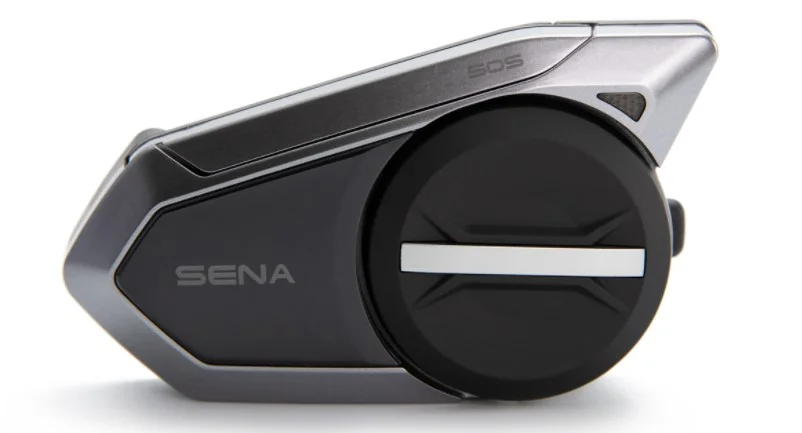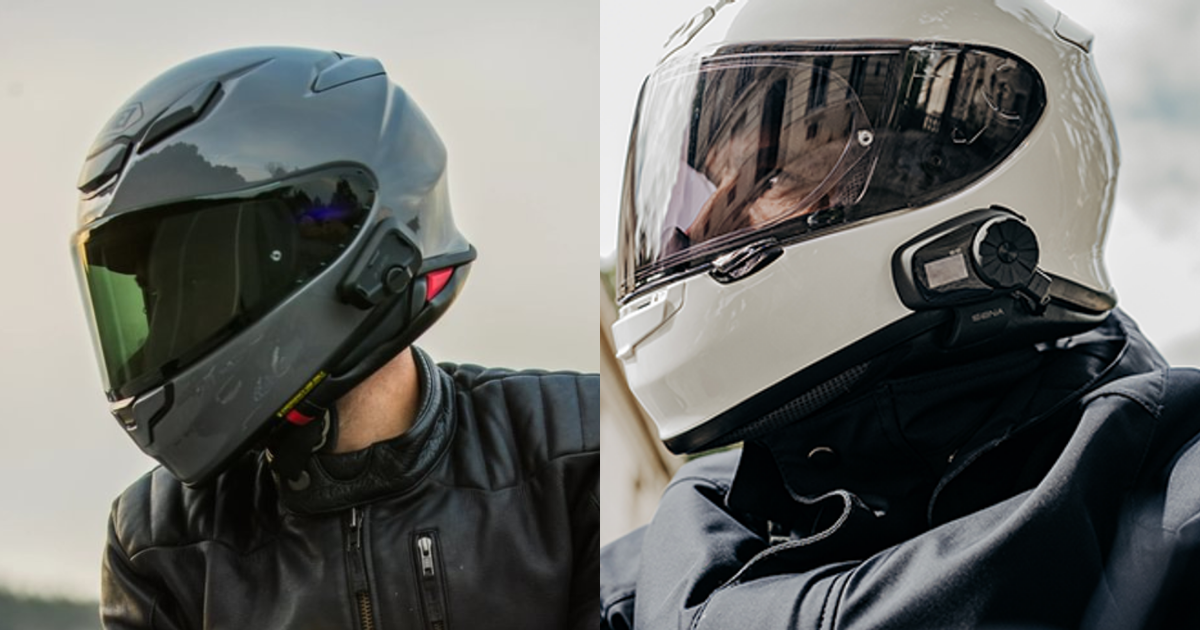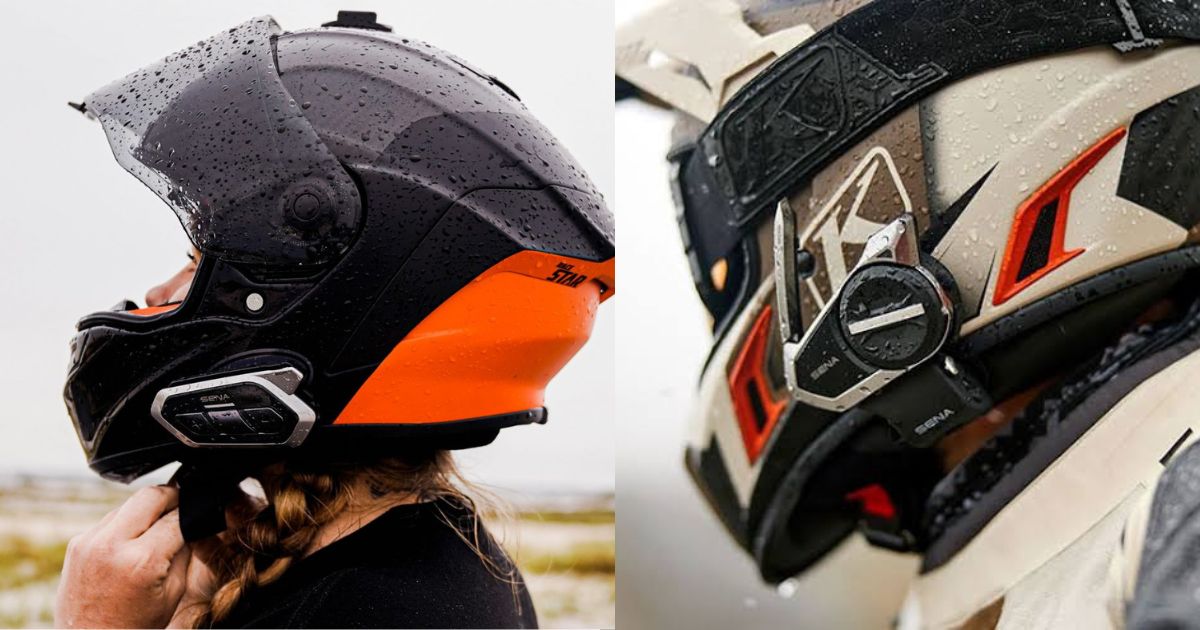
Cardo Packtalk Edge vs. Sena 50S: Which Mesh System Wins?
left for contents
Picture this: You’re leading a group ride through twisting mountain roads when suddenly your buddy’s bike starts making a strange noise three riders back. Without a reliable communication system, you’d never know until the next fuel stop — or worse, until someone breaks down completely. This scenario plays out thousands of times every day across riding groups worldwide, and it’s exactly why choosing the right motorcycle communication system matters more than most riders realize.
The motorcycle communication game has evolved far beyond simple helmet-to-helmet chatter. Today’s premium systems manage everything from multi-rider group conversations and music streaming to GPS navigation and emergency coordination. When you’re deep in backcountry terrain or managing a large group through busy traffic, your comm system becomes as critical as your brakes or suspension.
|
|
|
|
- 1.6 km (~1 mi) unit‑to‑unit range (works through obstacles, we've tested)
- Up to 8 km (5 mi) group range
- 13 hr battery life
- Magnetic Air‑Mount snaps securely
- Fiddly to remove with gloves
- Not ideal if your crew all use Sena
- Excellent sound quality (Harman Kardon)
- Long-range Mesh 2.0 intercom
- Easy-to-use jog dial
- Expensive
- Setup can be tricky
- Shorter battery life on Mesh mode
As someone who runs adventure motorcycle tours through some of the most challenging terrain worldwide, I don’t have the luxury of gear that “mostly works.” At Ride of Passage, we depend on our communication systems to keep groups connected across hundreds of miles of everything from desert highways to mountain singletrack. I currently run multiple Cardo Packtalk Edge units and several Sena 50S systems across our fleet, and these aren’t just sitting in a gear closet — they’re out there every single day connecting riders who need to stay in touch when it matters most.
What makes this comparison particularly important is understanding that there’s no universally “best” communication system. The reality is that your choice often depends more on what your riding group already uses, how many people you typically ride with, and whether you prioritize seamless connectivity with your existing crew over individual features. Both the Packtalk Edge and 50S represent excellent technology, but they serve different group dynamics and riding scenarios.
Understanding Your Group Communication Needs
Riding with a group is more than just hitting the road—it’s about staying connected. Choosing the right communication system can make or break your ride experience. Before getting caught up in specs, it’s crucial to consider what your group already uses and how you’ll connect with them on every twist and turn.
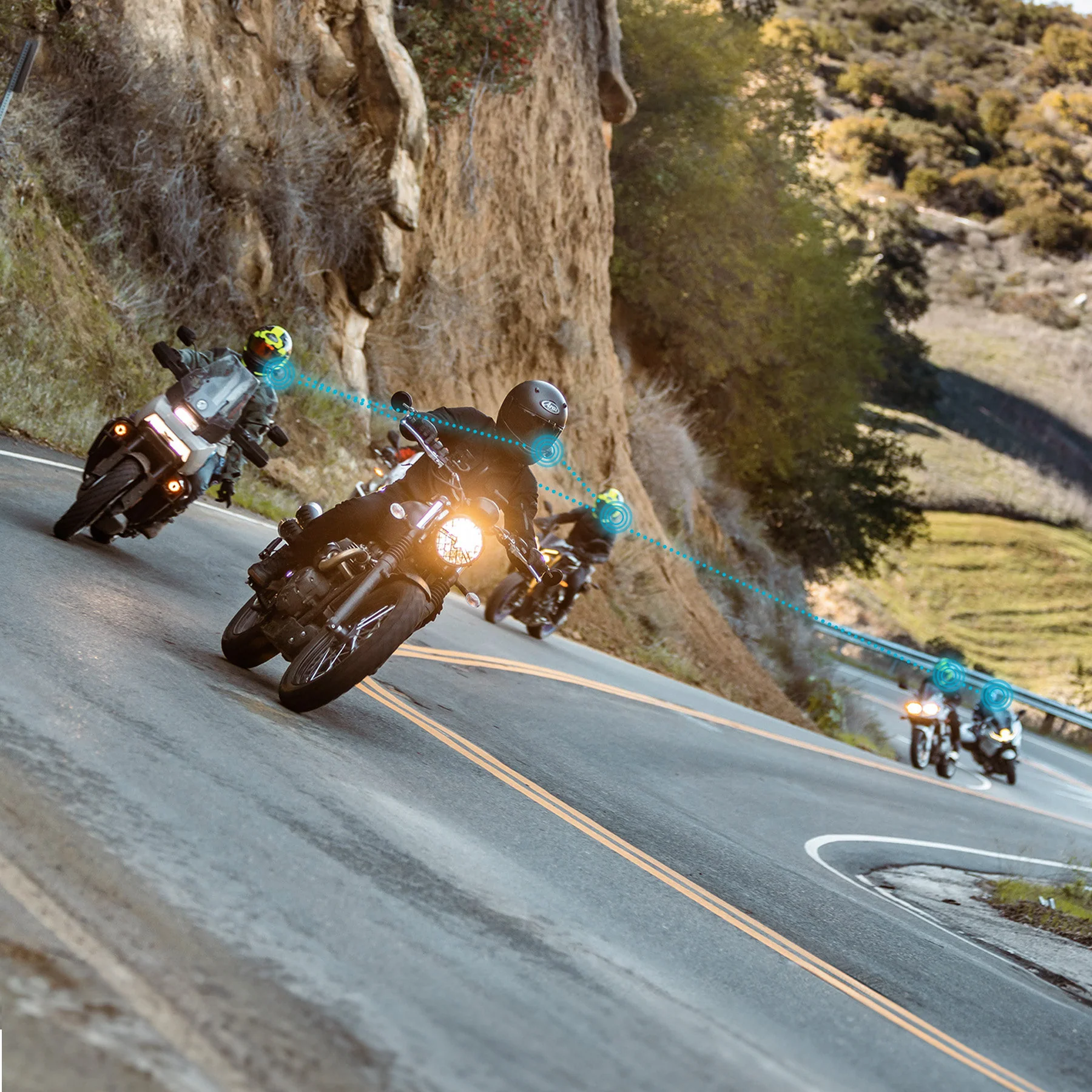
Before diving into technical specifications, let’s address the elephant in the room: the best communication system is often the one your riding buddies already use. If your regular group runs Sena systems, buying a Cardo creates compatibility challenges. If they’re all on Cardo’s mesh network, joining with a Sena means relying on basic Bluetooth pairing instead of advanced mesh features.
That said, both systems now offer cross-platform compatibility through Universal Intercom, though you lose some advanced features when mixing brands. The key is understanding what matters most: seamless integration with your group’s existing setup, or choosing the system that best fits your individual preferences and potentially influencing your group’s future purchases.
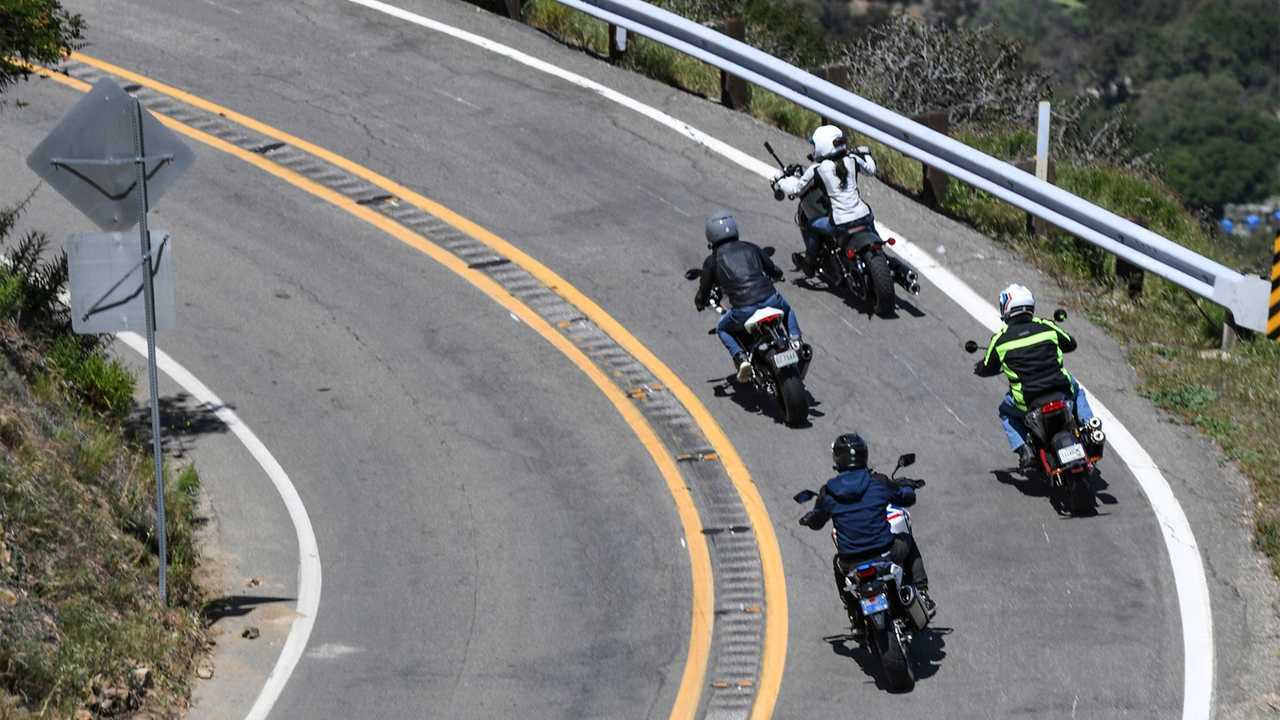
Check out our Cardo Packtalk Edge review—mesh intercom, sleek design, easy mount
Build Quality and Durability
Both units represent premium construction, but with distinct design philosophies that affect daily use.
The Cardo Packtalk Edge reflects what I’ve come to appreciate most about well-designed motorcycle gear — it disappears into your routine until you need it. When I mount the Edge to my helmet, the magnetic system engages with a satisfying click that tells me it’s secure. There’s no guesswork, no second-guessing whether it’s properly attached.

What really stands out during our tour operations is how the Edge handles the constant mounting and dismounting that comes with managing multiple riders’ systems. While other units require deliberate procedures, I can swap Edge units between helmets in seconds when troubleshooting group communication issues or setting up rental equipment for tour participants.
The JBL audio partnership shows its value most clearly during long riding days when audio fatigue becomes a real issue. The speakers maintain their clarity and balance whether I’m listening to navigation prompts in heavy traffic or music during highway stretches, without the harsh edge that makes some systems uncomfortable over time.
The Sena 50S takes a more utilitarian approach with robust, industrial-grade construction. It’s slightly bulkier but feels incredibly solid in your hands. The signature jog dial dominates the interface, and while some riders love this tactile control method, others need time to adapt to the workflow.
Durability-wise, both systems handle punishment exceptionally well. I use them in rain, heat, dust storms on remote roads, and everything in between — both maintain consistent performance. The IP67 ratings mean brief water submersion isn’t a problem, so rainstorms never interrupt communication.
Mounting Differences
Cardo Packtalk Edge — Magnetic Mount
The magnetic mount transforms what used to be a deliberate process into something instinctive. When I’m setting up multiple bikes for a tour departure, I can mount Edge units while simultaneously checking tire pressure or adjusting mirrors. The unit snaps into position with one hand, leaving me free to continue my pre-ride routine.
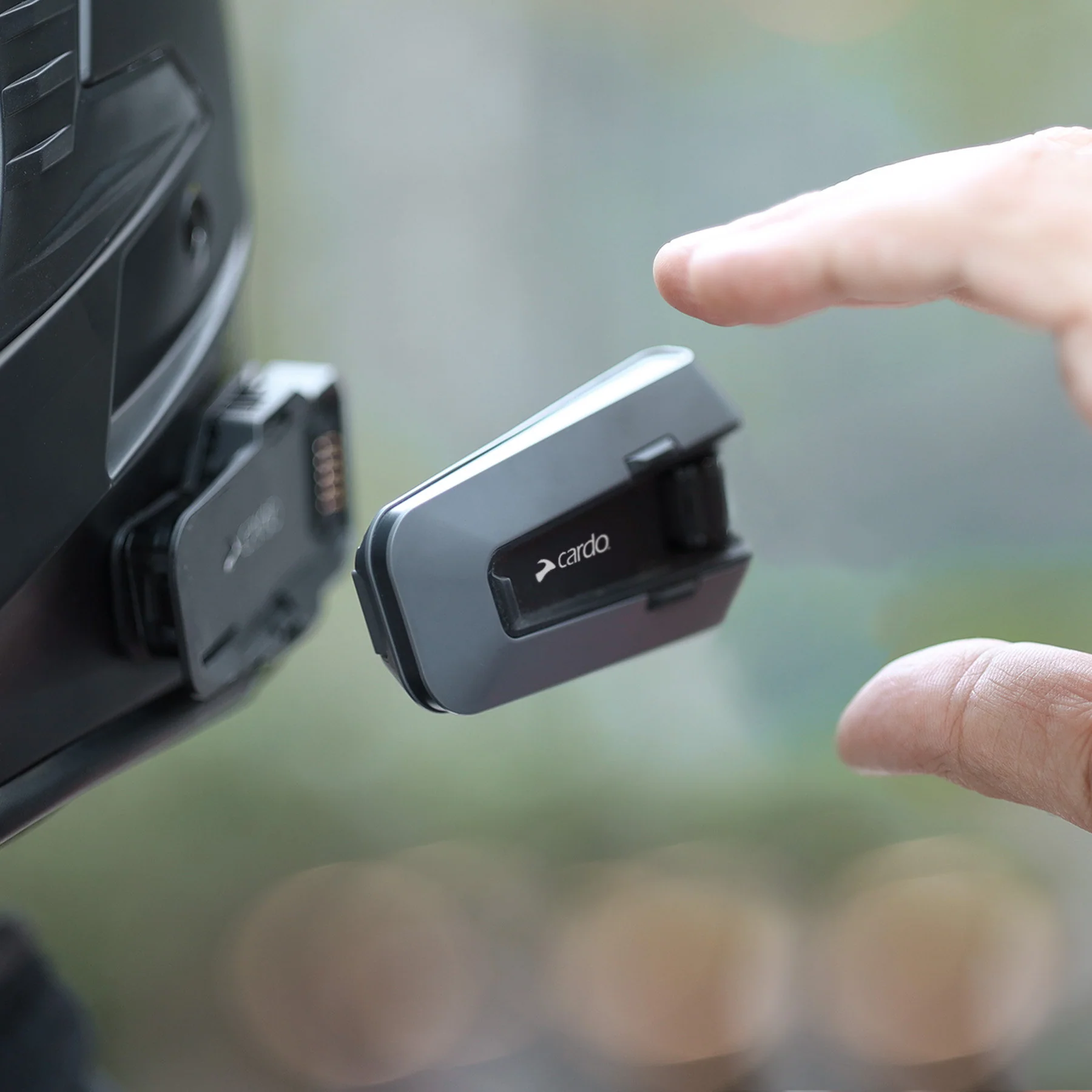
During rocky trail sections or sustained highway runs, I never experience the nagging worry that affects some mounting systems. The magnetic connection feels absolutely solid, and in thousands of miles of varied terrain, I’ve never had one release unexpectedly.
Sena 50S — Clamp Mount System
Sena uses their proven clamp-style mounting system that’s served them well across their product line. It’s rock-solid once attached and provides that mechanical security some riders prefer. However, mounting and dismounting requires more deliberate action — sliding, pressing, and securing in sequence.

The trade-off is that riders who prefer positive mechanical engagement over magnetic convenience often favor this approach.
Audio Performance — Premium Speakers from Audio Specialists
This is where both systems really shine, featuring partnerships with world-renowned audio companies.
Cardo Packtalk Edge — JBL Audio in Real Conditions
The JBL speakers prove their worth most during challenging audio scenarios that highlight the differences between good and great communication systems. When I’m leading a group through construction zones with heavy equipment noise, or navigating busy urban areas with constant traffic sounds, the Edge maintains conversation clarity that keeps the group coordinated.
I particularly notice the audio balance during mixed-content days — switching between GPS navigation announcements, intercom conversations, and music without constantly adjusting volume levels. The JBL tuning handles these transitions smoothly, maintaining intelligibility across different audio sources without the listening fatigue that builds up with harsher speaker systems.
Sena 50S — Harman Kardon Premium Audio
The Sena 50S features premium SOUND BY Harman Kardon, with both speakers and microphones developed in collaboration with Harman Kardon’s audio experts. This represents a significant upgrade over previous Sena audio systems, delivering what they call “world-class sound” through expertly crafted speakers.
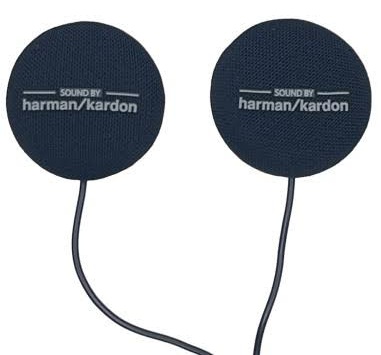
Communication Clarity and Wind Noise
Both systems feature advanced microphone designs optimized for motorcycle use:
The Cardo Edge uses sophisticated algorithms and noise cancellation that perform exceptionally well in variable conditions. Even with loud exhausts or highway crosswinds, conversations remain clear and natural-sounding.
The Sena 50S employs Harman Kardon’s microphone technology with newly designed sensors that provide robust voice communication performance. In extreme wind conditions, it performs slightly better than most competitors, though both systems excel in normal riding scenarios.
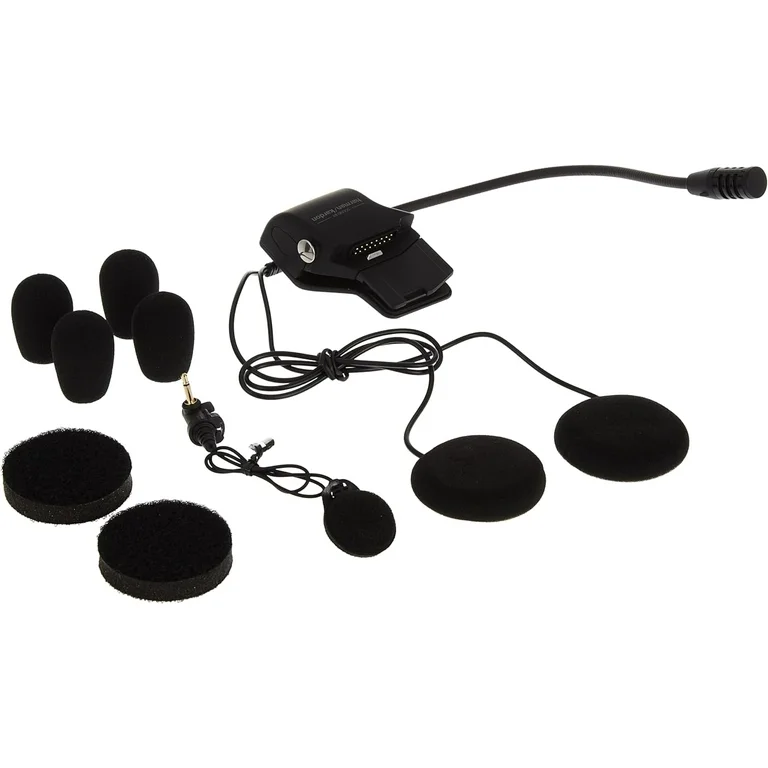
Sena 50S vs Cardo: Automatic Volume Adjustment
For many riders, automatic volume adjustment is a must-have feature. It raises audio levels at high speeds and lowers them in quieter moments—no more reaching for the controls mid-ride. But does the Sena 50S have it?
Sena 50S: Manual Only
The Sena 50S, part of Sena’s Mesh 2.0 lineup, delivers great audio quality, a glove-friendly jog dial, and strong battery life. However, it does not include true automatic volume adjustment.

Earlier Sena models offered a Smart Volume Control feature, but it’s absent on the 50S. While you can adjust settings like “Audio Overlay Volume Management” in the Sena app, these tweaks won’t automatically change volume based on speed or wind noise—you’ll still need to turn the jog dial yourself.
Cardo: Auto Volume Built-In
In contrast, many Cardo communicators—like the Packtalk Edge, Bold, and Pro—do include automatic volume adjustment. When enabled in the Cardo Connect app, the headset uses its microphone to detect ambient noise and adjust volume in real time. This makes it perfect for riders who frequently switch between city streets and highways.

Communication Technology and Group Management
This is where understanding your group’s needs becomes crucial, as the systems use different approaches to manage multi-rider communication.
Cardo’s Mesh Network in Action
The Dynamic Mesh Communication 2.0 system shows its capabilities most clearly during the type of riding where groups naturally spread out and regroup. When I’m leading tours through winding mountain roads, riders often get separated by slower traffic or varying comfort levels with specific corners. The Edge mesh network maintains connections across these gaps automatically.
What I appreciate most is how the system handles the reconnection process. When a rider who’s been out of range rejoins the group, they seamlessly return to the conversation without any button pressing or manual reconnection. During a recent tour through remote areas, one rider had mechanical issues and fell back nearly 2 kilometers — when our sweep rider stayed with them and they got moving again, both riders automatically reconnected to our group communication as soon as they came back within range.
Sena’s Mesh 2.0 Intercom Technology
The 50S uses Sena’s Mesh 2.0 with different strengths:
- Range: Up to 2 km in open terrain (potentially better than Cardo in ideal conditions)
- Capacity: Up to 24 riders (significantly more than Cardo)
- Public mesh mode: Can connect to other Sena users you encounter on the road
- Advanced noise control: Multiple microphone setup for superior wind noise reduction
Sena’s approach emphasizes maximum range and capacity. In open terrain, the 50S consistently delivers better range performance. The 24-rider capacity makes it ideal for large group tours or organized riding events.
Sena App vs Cardo Connect
| Feature | Cardo | Sena |
| Automatic Volume Adjustment | Yes – Adjust Audio Based on ambient noise (Toggle in app) | No – Manual jog dial only |
| Music & Intercom | Adjustable in ap | Adjust via “Audio Overlay Volume Management” |
| Audio Profiles | JBL sound modes(Base, Boost, Vocal, etc.) | Yes |
| Seperate Announcement Volume | Yes | Linked to main volume |
| Firmware Updates via App | Yes | Yes |
| Mesh Control | DMC (Dynamic Mesh Communication) | Mesh 2.0 |
| Pairing via App | Yes – Can initiate pairing for phone & intercom | Only manages pairing after initial manual connection |
| Initial Phone Pairing | Via app or Bluetooth menu | Must be done in Phone’s Bluetooth settings |
| Intercom Pairing | Can be done by App or Buttons | Buttons, with some app management |
User Interface Philosophies
Perhaps no difference is more personal than how you prefer to interact with your communication system.
Cardo’s Voice Commands in Practice
The “Hey Cardo” system becomes most valuable in situations where taking hands off the handlebars creates safety concerns. During technical riding sections or heavy traffic navigation, I can adjust audio levels, skip tracks, or initiate intercom calls without shifting my focus from road conditions.
The voice recognition adapts to my speech patterns over time, but what I find most practical is how it handles commands even with helmet buffeting or engine noise. When I need to quickly lower music volume to hear an important navigation instruction or boost intercom volume during a roadside discussion, the voice commands work reliably without requiring multiple attempts or perfect pronunciation.
Sena’s Tactile Control Philosophy
The 50S centers around their signature jog dial interface, which many riders prefer because:
- Physical feedback confirms every input
- Reliable operation with any glove thickness
- No dependence on clear speech or quiet conditions
- Intuitive operation once you learn the sequences
- No voice recognition delays or misinterpretations
The trade-off is requiring physical interaction with the device, which some riders prefer for precision control in challenging conditions.
Cross-Platform Compatibility and Group Dynamics
Here’s where the group decision becomes important. Both systems now support Universal Intercom for cross-brand communication, but with limitations:
When mixing Cardo and Sena systems in the same group, you lose advanced mesh features and fall back to basic Bluetooth intercom. This works for small groups but becomes problematic with larger groups or when you need features like music sharing or advanced group management.
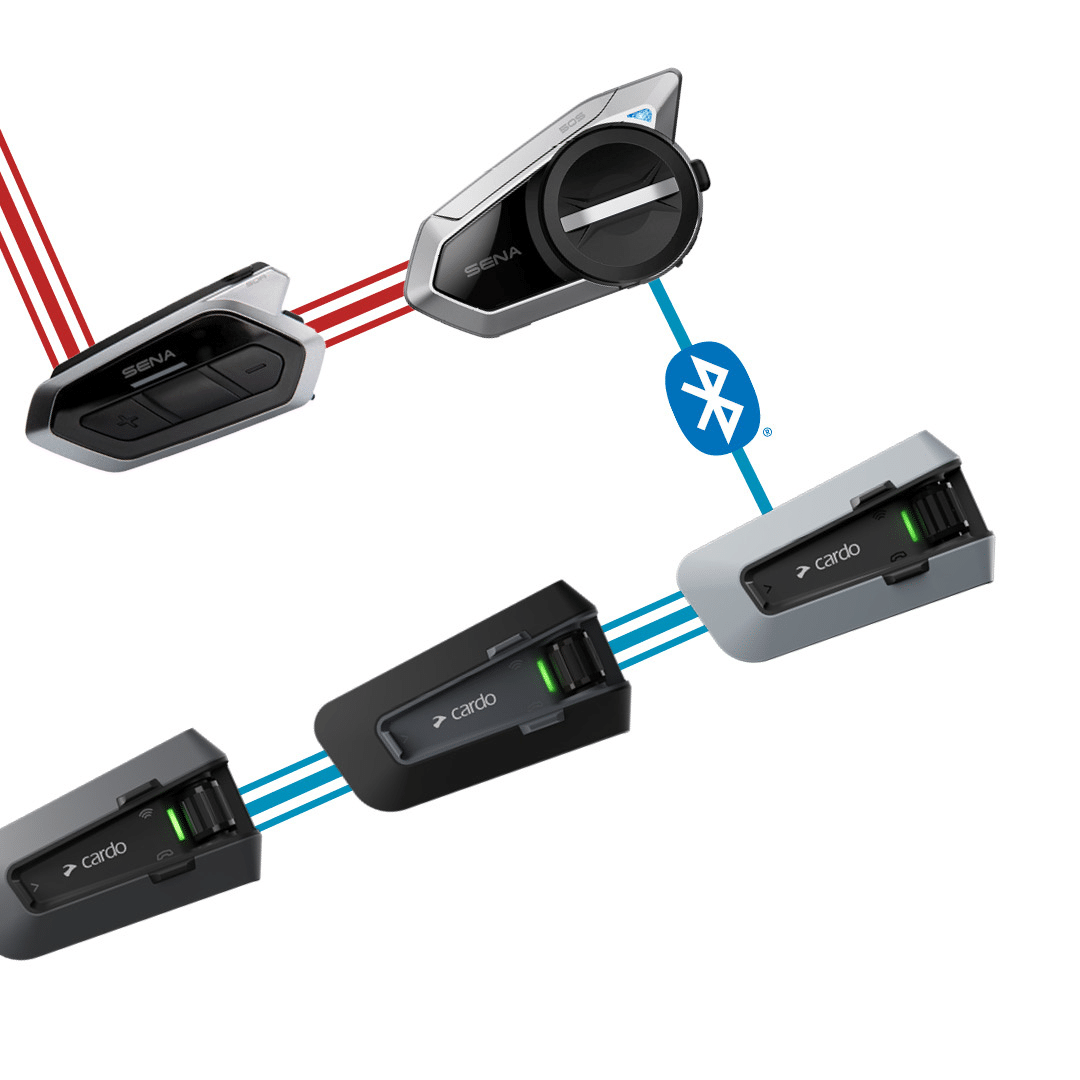
The practical reality is that groups tend to standardize on one system for optimal performance. If your regular riding crew uses Sena systems, the 50S integrates seamlessly. If they’re invested in Cardo’s ecosystem, the Edge provides the best experience.
Long-Term Value and Investment
Cardo Packtalk Edge: $439.95
- All features included permanently
- No subscriptions or ongoing costs
- Premium JBL audio included
- Magnetic mounting convenience
- Full voice command capability
Sena 50S: $379.95
- Lower initial investment
- All features included permanently
- Harman Kardon premium audio
- Traditional jog dial control
- Higher group capacity (24 riders)
Both systems represent long-term investments with no subscription requirements. The price difference reflects different feature priorities rather than overall value differences.

Making the Right Choice for Your Riding
The decision ultimately comes down to your specific riding scenarios and group dynamics:
Choose the Cardo Packtalk Edge if:
- Your group already uses Cardo systems
- You ride primarily in smaller groups (under 15 people)
- Voice control appeals more than physical interfaces
- You prioritize mounting convenience
- You want the most refined user experience
Choose the Sena 50S if:
- Your group uses Sena communication systems
- You regularly ride in large groups (15+ people)
- You prefer physical controls over voice commands
- Maximum communication range is crucial
- You want Harman Kardon premium audio
Consider Your Group First if:
- Your regular riding buddies all use the same brand
- You participate in organized rides with established communication standards
- Seamless group communication matters more than individual preferences

Feature Comparison
| Feature | Cardo Packtalk Edge | Sena 50S |
| Audio Partnership | JBL 40mm speakers | Harman Kardon premium audio |
| Group Capacity | 15 riders | 24 riders |
| Communication Range | 1.6km rider-to-rider / 8km group | Up to 2km open terrain |
| Primary Interface | Voice commands (“Hey Cardo”) | Jog dial and buttons |
| Mount System | Magnetic Air Mount | Clamp mount |
| Battery Life | 13 hours | 12+ hours |
| Waterproof Rating | IP67 | IP67 |
| Cross-Platform Compatibility | Universal Intercom | Universal Intercom |
| Price | $439.95 | $379.95 |
Love a helmet that only fits a specific comms unit?
HJC, Shoei, Schuberth, Nexx and even Harley all try to force you in to custom-fit comms units that may not fit how you ride. So Tubs Jackson created an adapter to get a factory fit for any comms unit on these otherwise amazing helmets.
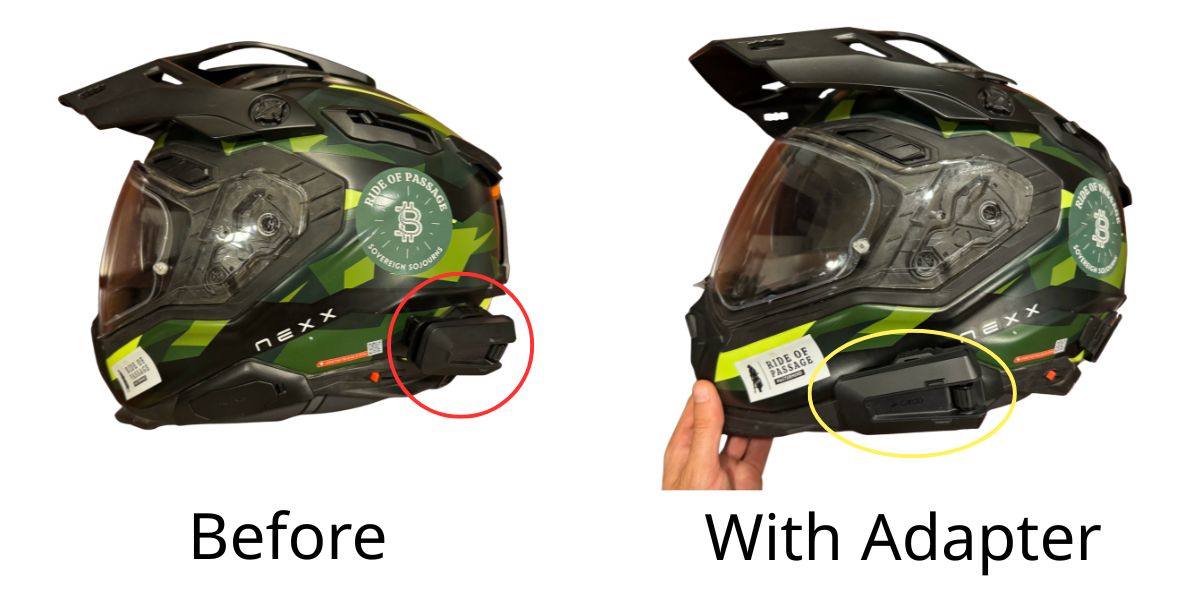
Tubs Jackson is a weird name, I know, but I have their adapter in my Nexx X.WED3 helmet and it’s rock solid. Much nicer than reaching way back to where I had the sticky mount before. I wish I’d thought of this idea.
Tip: Get FREE SHIPPING just by buying here or using code BETTERONTHEROAD at checkout.
Final Perspective from the Road
After extensive professional testing use across diverse riding conditions and group sizes, both the Cardo Packtalk Edge and Sena 50S represent excellent communication solutions. Neither will disappoint you from a quality or performance standpoint.
The key insight from managing tour groups with mixed communication systems is that seamless group compatibility often matters more than individual feature preferences. The best system is frequently the one that integrates perfectly with your riding community’s existing setup.
|
|
|
|
- 1.6 km (~1 mi) unit‑to‑unit range (works through obstacles, we've tested)
- Up to 8 km (5 mi) group range
- 13 hr battery life
- Magnetic Air‑Mount snaps securely
- Fiddly to remove with gloves
- Not ideal if your crew all use Sena
- Excellent sound quality (Harman Kardon)
- Long-range Mesh 2.0 intercom
- Easy-to-use jog dial
- Expensive
- Setup can be tricky
- Shorter battery life on Mesh mode
That said, if you’re starting fresh or influencing a group’s communication choice, consider your typical group size, preferred interaction style, and long-term riding plans. Both systems will serve you well for years of reliable communication.
The choice isn’t about finding the objectively “best” system — it’s about finding the right system for how you actually ride and who you ride with.
Related
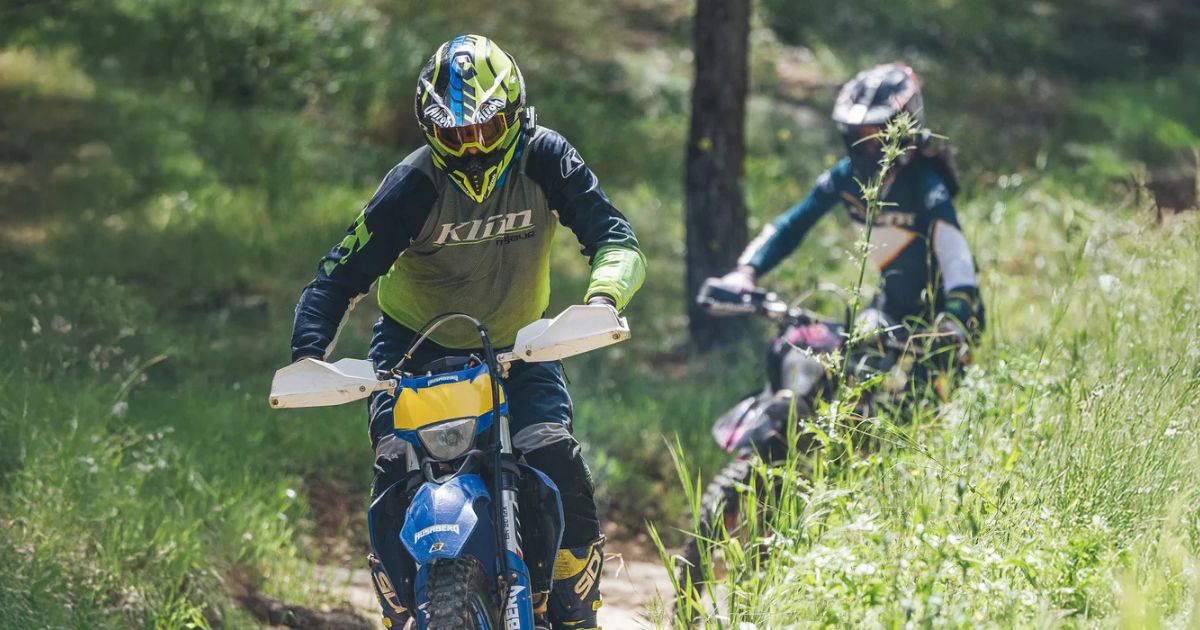
Best Cardo Communicators for Motorcycle Riders
Find the best Cardo communicator for your rides—compare mesh, Bluetooth, sound, and features to match your budget, group size, and style.

